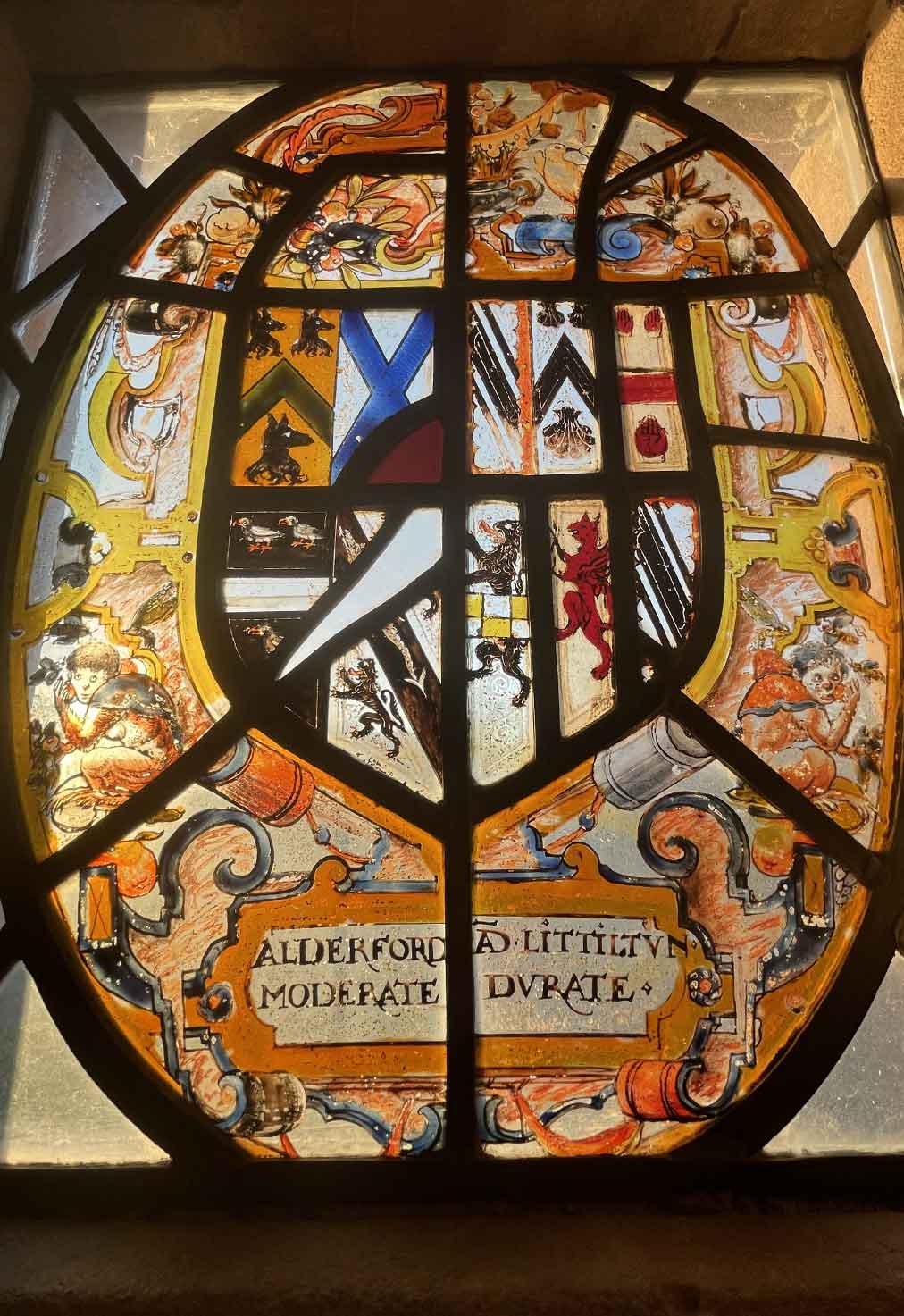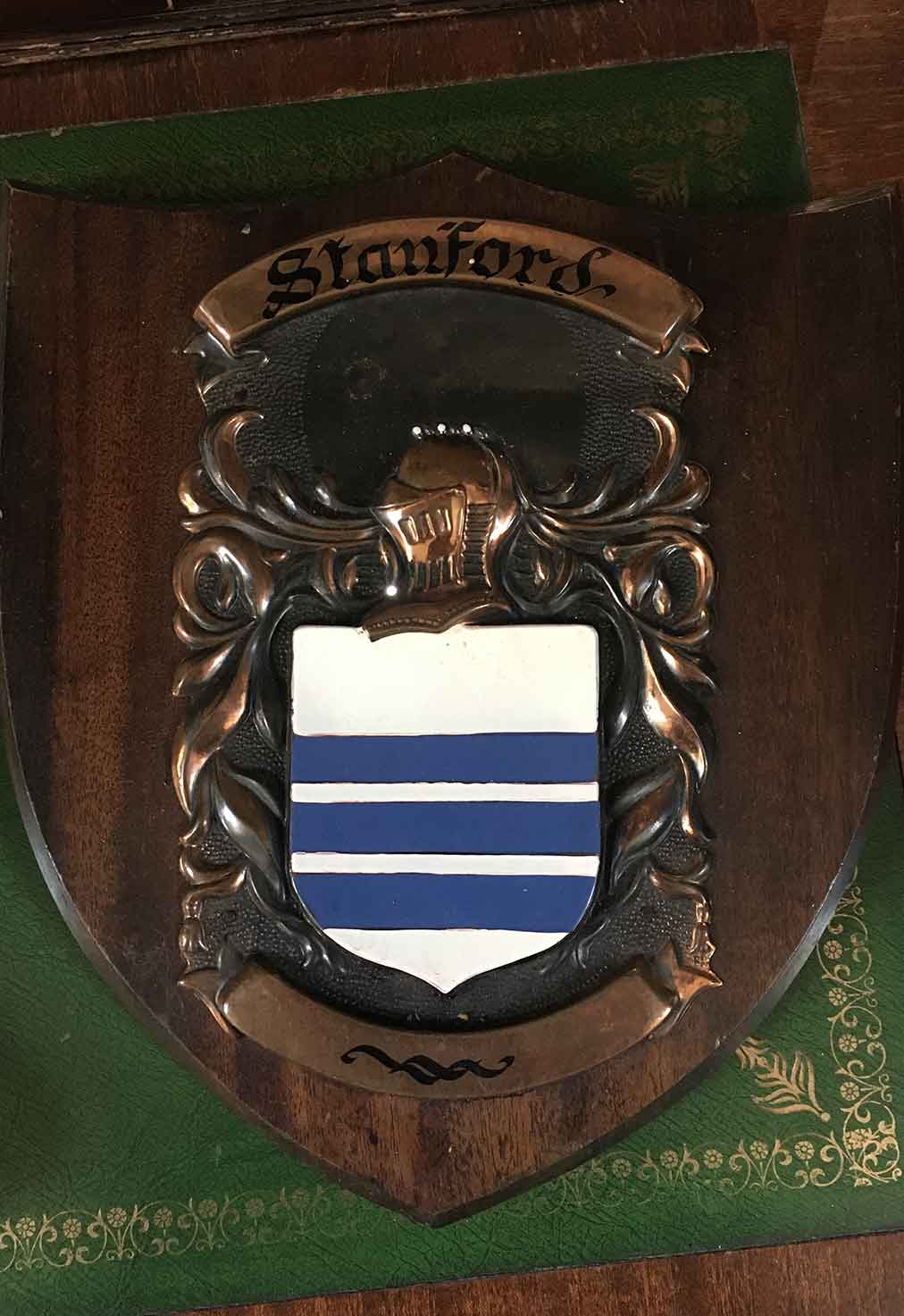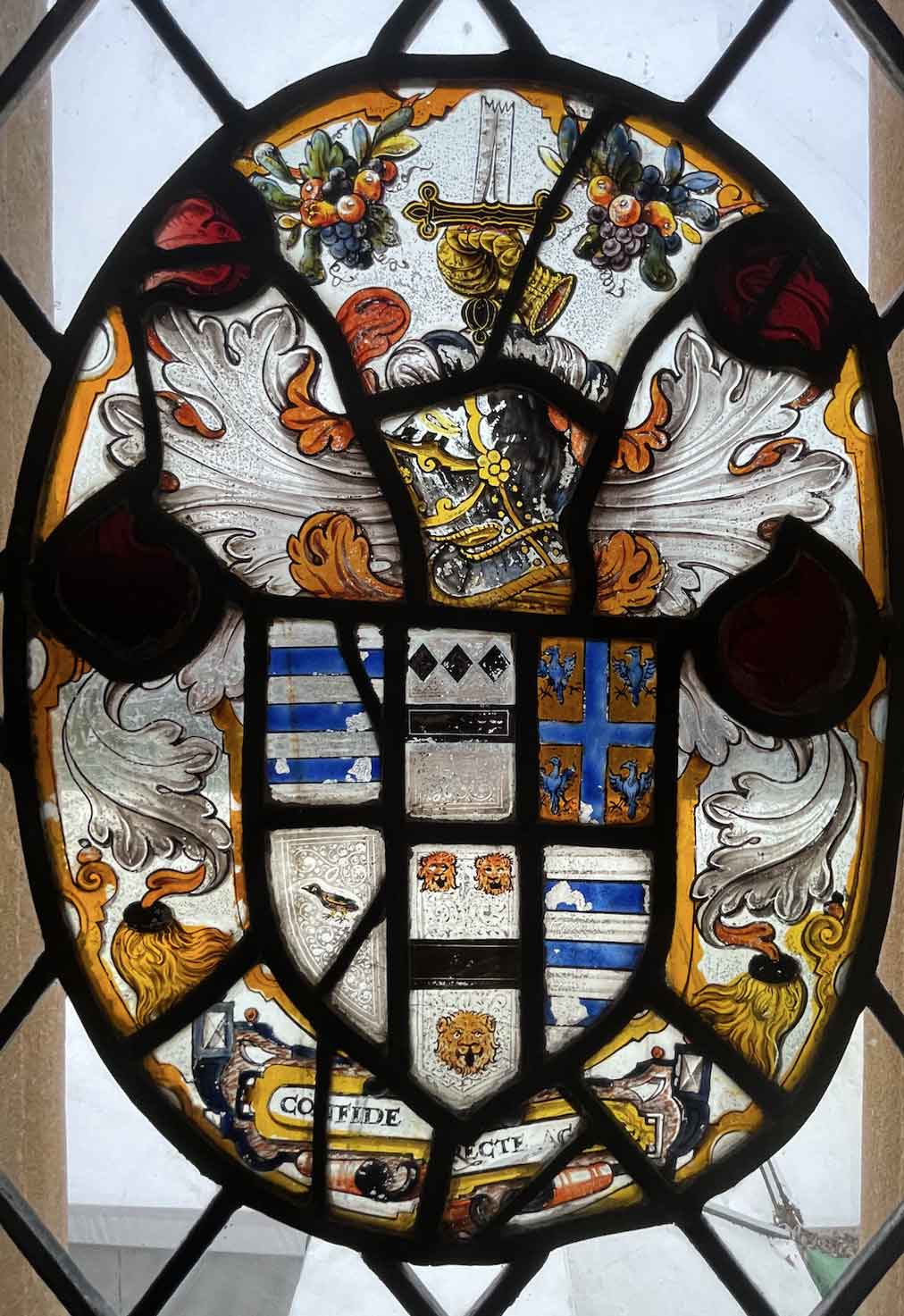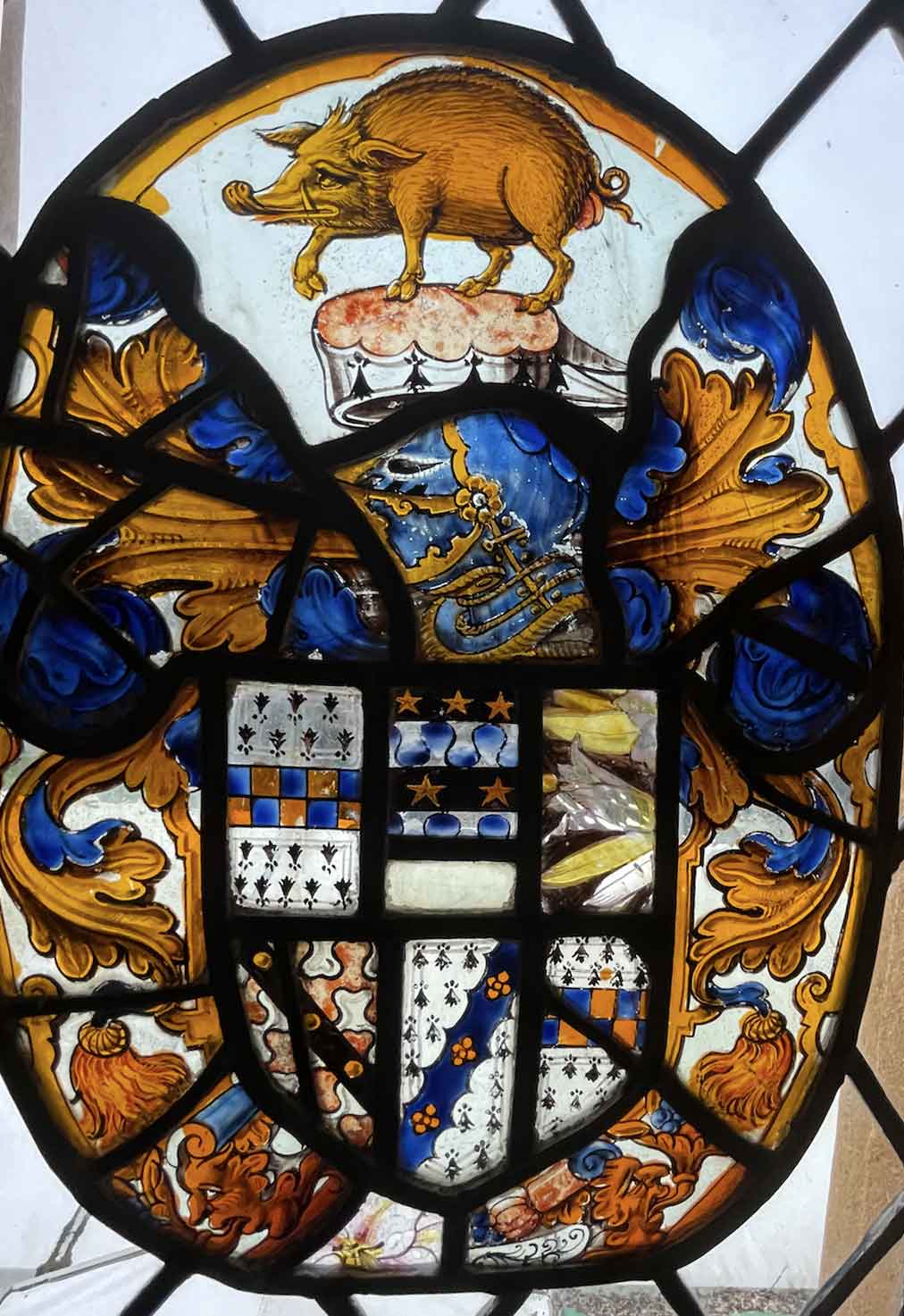Welcome to the fourth and final edition of ‘the History of Karma Salford Hall’ Part 4. In this edition, we are now in the sixteenth and seventeenth centuries where folk became more and more obsessed with their family coats of arms – and indeed enjoyed personalising their heraldic motifs. The Alderford coat of arms can be seen on the walls and above the fireplaces throughout the Karma Salford Hall.
This coat of arms was recorded by an official heraldic visitation in 1569. During the Tudor dynasty, the various monarchs tried to regulate the display of heraldry, to make sure no commoners were improperly bearing arms. By registering their coat of arms with the heralds, the Alderfords paid for the privilege of having official proof of their right to display their shield.
John Alderford’s coat of arms has four quarters, representing the union of four bloodlines. The top left quarter, filled with the blue saltire on a white background, was supposedly the ‘original’ Alderford symbol.
The saltire was associated with St Andrew, as it was thought that he was martyred on a crucifix nailed in this formation and it is likely that the Alderfords viewed the saltire as a simple, pure and honest Christian motif, appropriate for a longstanding Catholic family such as theirs.
The top right-hand quarter on the coat of arms, is meant to show three lion heads around a chevron. These were the arms of the Everard family. John Alderford’s great grandmother was Maude Everard, which explains this heraldic inclusion.
In the quarter below the saltire, there are three ducks arranged around a band, called a Fess The heraldic visitation specifies that the ducks are Sheldrakes. This was undoubtedly a pun on the family name Sheldon, who had borne these three ducks on various shield formations through multiple generations. Heraldic puns on names are called ‘canting arms’, because they sing or play on the sound of a surname. Visual puns were very popular in Renaissance culture; Thomas More had moorcocks on his coat of arms. The Sheldon and Alderford families were deeply intertwined through various historic marriages. John Alderford’s mother was a Sheldon.
The final quarter represents the Rudings family, an extremely ancient and prestigious noble line. Right back in the fifteenth century, a female Ruding had married a male Sheldon, and it seems that ever since then the Sheldons had jealously retained the Ruding charge as a sign of their connection to the family. Hence, when the Alderford family decided to incorporate the Sheldon family arms, they happily snapped up the accompanying Ruding quarter alongside the Sheldrakes. Wyverns (dragons) and lions were considered two of the noblest animal badges, adding to the mystique of the Ruding connection.

The Alderfold Littleton shield

The Dormer shield

The Alderfold Dormer shield

The Hugford shield
Displaying the coats of arms of family and friends in ornate glass panels was a fashionable way to show off connections, hence the shields of Alderford, Dormer, Hugford, and Littleton. Elizabeth Dormer was John Alderford’s second wife and his first wife had been a Littleton. Similarly, the Hugford family had married into the Alderfords a couple of generations before the furnishing of Salford Hall, suggesting that families continued to celebrate their historic links well after intermarriages had occurred.
The various combinations show how important marriages were for sealing friendships and alliances. Indeed, after the Reformation, noble Catholic families made a concerted effort to band together and boost one another’s networks, ensuring that they retained power and influence despite their religious sentiments. By envisaging a heraldic gathering through the medium of glass, Salford Hall would have evoked the chivalric connotations of medieval great halls and Arthurian round tables, as though summoning all one’s powerful allies and connections together.
At some point in the past the panels have been reassembled from fragments, sometimes incorrectly, but we can assume that they were originally commissioned for Salford Hall as all the shields and names pertain to Alderford connections.The ornamental frameworks for the shields are all similar, suggesting a similar time frame for their execution. The interlocking bands and curlicules that make up the complex frame pattern are a beautiful example of strapwork in a Northern Mannerist style, made popular in England through the circulation of printed ornamental designs from major European trading hubs like Antwerp. The strapwork designs are populated by fantastical figures, ranging from grotesque faces to nude men, alongside various creatures and swags of fruit. The taste for this kind of ornament was prevalent from the late sixteenth into the seventeenth centuries.


The Alderfold coat of arms

The Arden coat of arms at Salford Hall
The History of Salford Hall – pdf download
Fascinated? There’s much more to read about this topic and others in ‘The History of Salford Hall’. To celebrate the recent opening of Karma Salford Hall, we are thrilled to share with you the entire 30-page presentation researched by’ Ancestral Footsteps’…
Discover Karma Salford Hall Now








